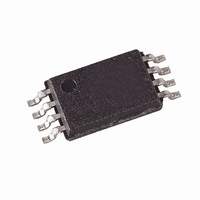T48C862M-R3-TNS Atmel, T48C862M-R3-TNS Datasheet - Page 17

T48C862M-R3-TNS
Manufacturer Part Number
T48C862M-R3-TNS
Description
IC MON TIRE PRESS 315MHZ 24SOIC
Manufacturer
Atmel
Datasheet
1.T48C862M-R3-TNS.pdf
(107 pages)
Specifications of T48C862M-R3-TNS
Frequency
315MHz
Modulation Or Protocol
FM, FSK
Data Rate - Maximum
32 kBaud
Power - Output
10dBm
Current - Transmitting
9.5mA
Data Interface
PCB, Surface Mount
Antenna Connector
PCB, Surface Mount
Memory Size
1KB EEPROM, 1KB RAM
Voltage - Supply
2 V ~ 4 V
Operating Temperature
-40°C ~ 125°C
Package / Case
24-SOIC (0.200", 5.30mm Width)
Lead Free Status / RoHS Status
Contains lead / RoHS non-compliant
Features
-
Applications
-
RAM Address Registers
Expression Stack Pointer (SP) The stack pointer contains the address of the next-to-top 4-bit item (TOS-1) of the
Return Stack Pointer (RP)
RAM Address Registers
(X and Y)
Top of Stack (TOS)
Condition Code Register
(CCR)
Carry/Borrow (C)
Branch (B)
Interrupt Enable (I)
4554A–4BMCU–02/03
The RAM is addressed with the four 8-bit wide RAM address registers: SP, RP, X and Y.
These registers allow access to any of the 256 RAM nibbles.
expression stack. The pointer is automatically pre-incremented if a nibble is moved onto
the stack or post-decremented if a nibble is removed from the stack. Every post-decre-
ment operation moves the item (TOS-1) to the TOS register before the SP is
decremented. After a reset, the stack pointer has to be initialized with >SP S0 to allocate
the start address of the expression stack area.
The return stack pointer points to the top element of the 12-bit wide return stack. The
pointer automatically pre-increments if an element is moved onto the stack, or it post-
decrements if an element is removed from the stack. The return stack pointer incre-
ments and decrements in steps of 4. This means that every time a 12-bit element is
stacked, a 4-bit RAM location is left unwritten. This location is used by the qFORTH
compiler to allocate 4-bit variables. After a reset the return stack pointer has to be initial-
ized via >RP FCh.
The X and Y registers are used to address any 4-bit item in the RAM. A fetch operation
moves the addressed nibble onto the TOS. A store operation moves the TOS to the
addressed RAM location. By using either the pre-increment or post-decrement address-
ing mode arrays in the RAM can be compared, filled or moved.
The top of stack register is the accumulator of the microcontroller block. All arith-
metic/logic, memory reference and I/O operations use this register. The TOS register
receives data from the ALU, EEPROM, RAM or I/O bus.
The 4-bit wide condition code register contains the branch, the carry and the interrupt
enable flag. These bits indicate the current state of the CPU. The CCR flags are set or
reset by ALU operations. The instructions SET_BCF, TOG_BF, CCR! and DI allow
direct manipulation of the condition code register.
The carry/borrow flag indicates that the borrowing or carrying out of arithmetic logic unit
(ALU) occurred during the last arithmetic operation. During shift and rotate operations,
this bit is used as a fifth bit. Boolean operations have no effect on the C-flag.
The branch flag controls the conditional program branching. Should the branch flag has
been set by a previous instruction, a conditional branch will cause a jump. This flag is
affected by arithmetic, logic, shift, and rotate operations.
The interrupt enable flag globally enables or disables the triggering of all interrupt rou-
tines with the exception of the non-maskable reset. After a reset or while executing the
DI instruction, the interrupt enable flag is reset, thus disabling all interrupts. The core will
not accept any further interrupt requests until the interrupt enable flag has been set
again by either executing an EI or SLEEP instruction.
T48C862-R3
17













